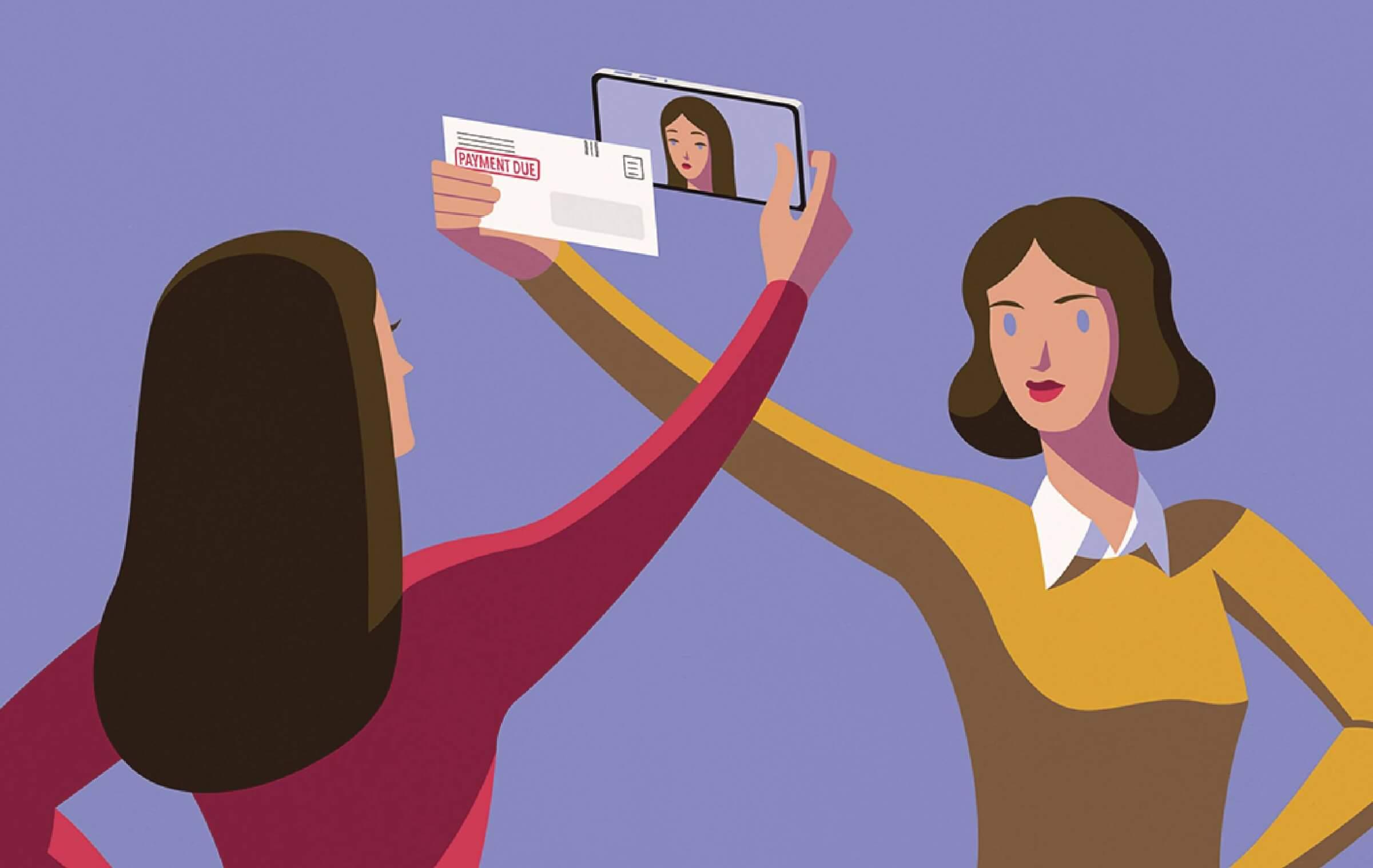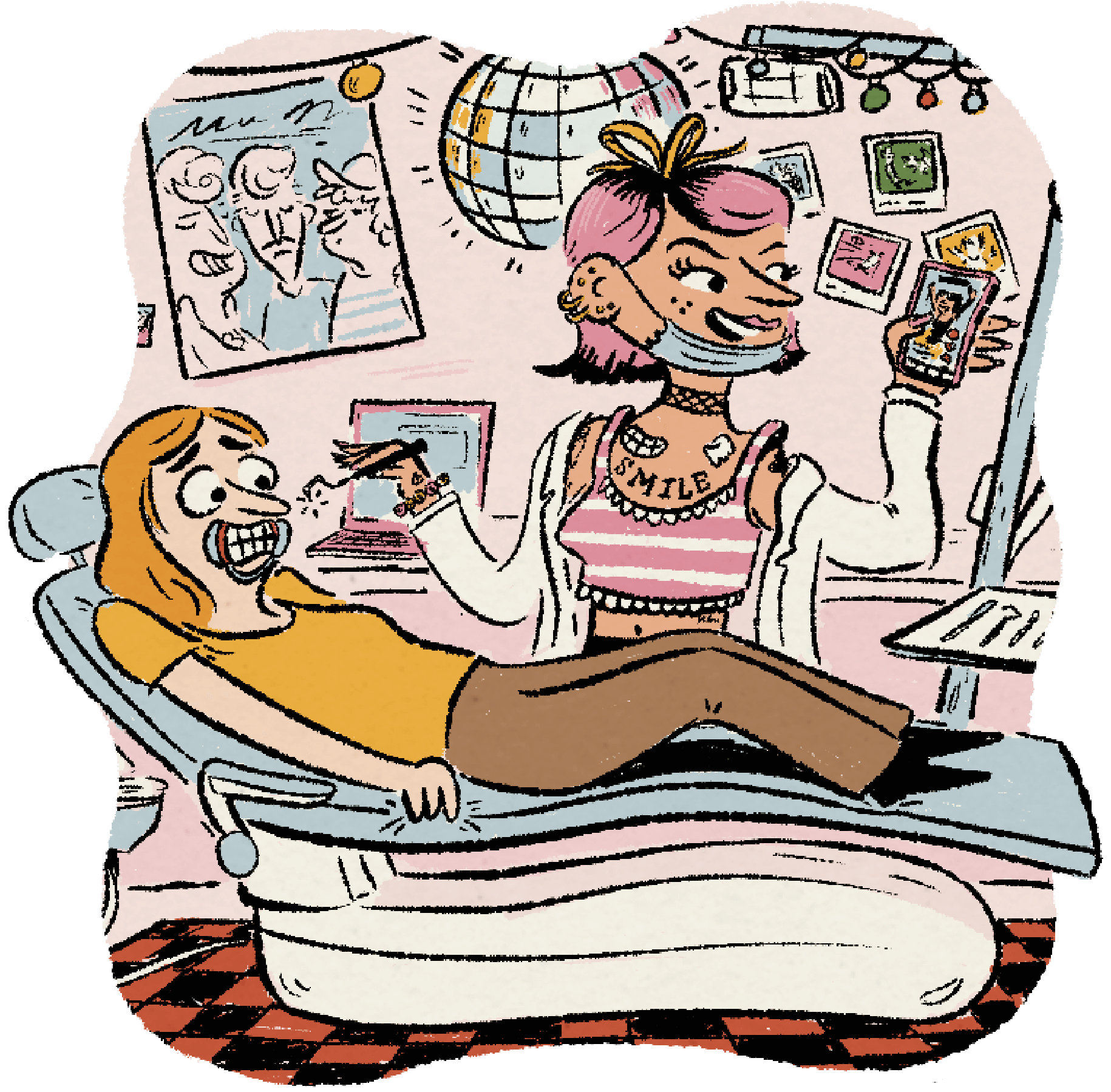THIS IS 50
The Pamela Anderson
Face-Off
The ‘Baywatch’ star’s 1990s makeup look is having a moment—without her

On Baywatch, Pamela Anderson’s pencil-thin brows, smoky cat’s-eye shadow and plump pink lips defined a special kind of 1990s glamour, one I tried to imitate in my insecure 20s.
Plot twist: At 58, Anderson has become a devotee of barefaced beauty. And ironically, some designers have put their runway models in ’90s makeup and those arched Anderson brows.
I find the barefaced look inspiring, but two of my 50-something girlfriends were horrified at the idea. When I asked my two Gen Z daughters which style they preferred, they said, “Neither.” They aspire to the “no-makeup makeup look”—a blend of glowy balms designed to make women look naturally flawless. As if they didn’t realize that they don’t need improvement. Something I wish I’d known about myself, back in the Baywatch days. —Maria A. Brown
MONEY MANNERS
End the Cellphone Subsidy, Kindly

Q: My wife and I added our daughter to our family cellphone plan when she was 15, but she just turned 25, and we think it’s time she pay her own way. How do we politely tell her?
Lizzie Post, AARP’s financial etiquette columnist, answers:
Many kids stay on their parents’ cellphone plan long after they’ve crossed into adulthood. But whether you keep your daughter on your plan is your choice—and your choice alone.
Your daughter has grown accustomed to this arrangement, though, meaning a cellular bill isn’t on her budget sheet yet. So I don’t think you should kick her off your plan immediately. Offering a buffer of one to two months is considerate. Also, keep an open mind—it may be cheaper for her to remain on your plan and start paying for her usage than to get her own plan.
Let your daughter know that you’re ready to make a change: “Kelsey, we want to talk to you about the family cellphone plan. We feel it’s time for you to take on the role of paying for your plan.” Whether you explain it as a matter of principle or need is up to you, but an explanation can help your daughter better understand where you’re coming from and leave less room for assumptions or resentment.
MY FIRST ...
DENTIST WHO WAS YOUNGER THAN ME

WHEN MY dentist told me she was moving out of town, I felt like I was losing not just a trusted health care provider but also a friend. We were about the same age, and over the past decade, I had always enjoyed chatting with her about our children’s milestones: final exams, school dances, college searches.
I stayed with the same practice for my next appointment. That’s how I found myself being treated by someone so young she could have been my kid. I had always viewed my health practitioners as mature authority figures, which was decidedly not my impression of this dentist once she heard I was going to a concert that night. She clapped and squealed with excitement. It put my teeth on edge.
When asked if I wanted to schedule my next appointment, I balked. Instead, I found a new dentist the same way I’d found my old one: by word of mouth.
Here’s the thing: This dentist, too, is younger than I am. I’ve accepted that seeing younger practitioners is part of getting older. But there’s a difference between age and maturity; it’s the latter I realized I valued. My new dentist carries herself with great professionalism, which makes me more confident in her recommendations—and leaves me smiling after every visit. —Kristin Baird Rattini


MEMBERS ONLY
Visit aarp.org/moneymanners for more etiquette advice or to ask Lizzie Post your own question.
MEMBER CHECK LIST
SUBSCRIBE TO AARP’S MEMBER BENEFITS UPDATE
Stay updated on your AARP benefits—from discounts and resources to tools and services that bring you real, everyday value. Discover ways to make life more fun and affordable! Go to aarp.org/membernews.
From top: Mitchell Gerber/Corbis/VCG/Getty Images; Kristina Bumphrey/Variety/Getty Images; Illustration by Jon Krause; Illustration by James Yates